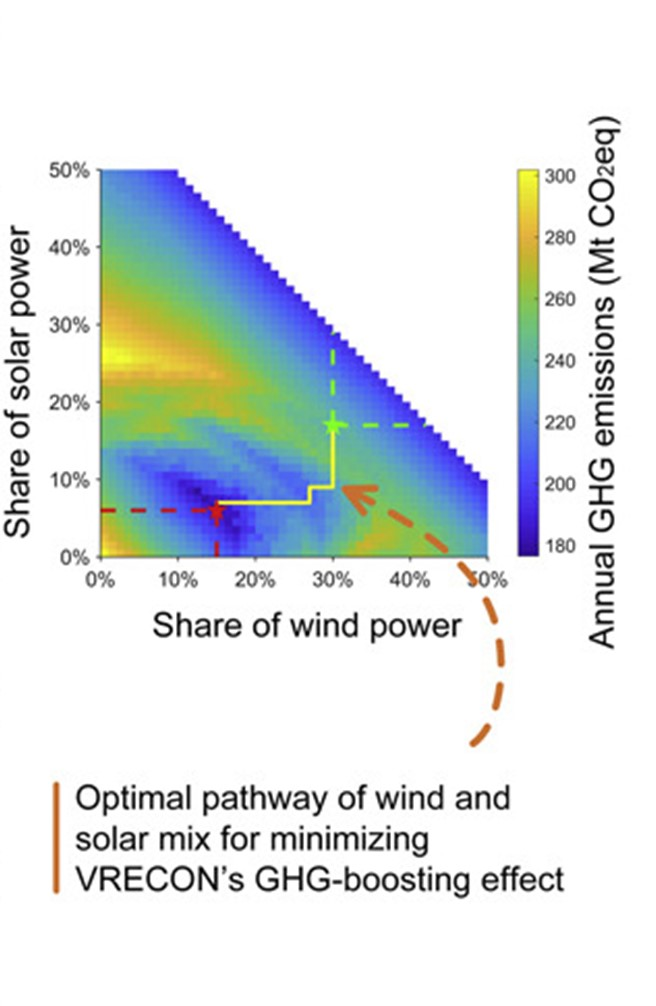Nowadays, many countries have set ambitious targets for renewable energy penetration in the coming decades, as increasing variable renewable energy (VRE) is one of the main approaches for greenhouse gas (GHG) mitigation. However, in a recent study by Prof. Yang Yu’s group at Tsinghua University and his collaborators, it was demonstrated that VRE crowds out nuclear power (VRECON) but could not fully cover the remaining market share, obtained through fossil energy, and this led to a risk of a GHG increase associated with increasing VRE. They developed an integrated dispatch-and-investment model to estimate the VRECON GHG-boosting effect in the Pennsylvania-New Jersey-Maryland Interconnection and the Electric Reliability Council of Texas. In the above two markets, VRECON could increase the annual GHG emission by up to 136 MTCO2eq in total.

Furthermore, they found that the VRECON GHG-boosting effect could be mitigated by optimizing the mix of wind and solar power. To ensure future GHG emission reductions, the research suggested that policy-makers should require a proper mix of wind and solar power, associated with the Renewable Portfolio Standards. It is also necessary to manage the pace of retirement of nuclear power, to match the progress of penetration by VRE.
The findings are published in iScience, which is a new open access journal from Cell Press that provides a platform for original research in the life, physical, earth, and health sciences. The first author of the paper is Professor Xiaoli Zhao from the China University of Petroleum, and the corresponding author is Assistant Professor Yang Yu. Other authors are from School of Environment, Tsinghua University and School of Economics and Management, China University of Petroleum.
By Yuying Chang
Editor: Li Han

